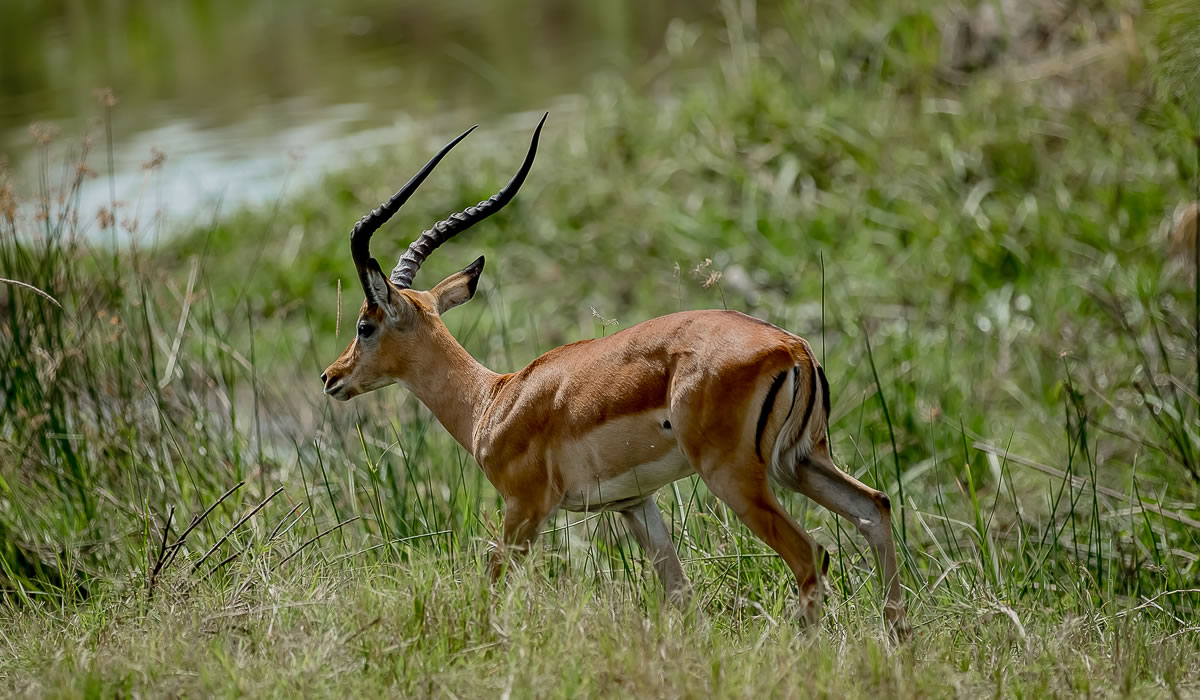Akagera National Park is one of the most remarkable wildlife destinations in Rwanda, combining spectacular scenery with rich biodiversity and unforgettable safari experiences. Located in the eastern part of the country along the border with Tanzania, Akagera stretches across approximately 1,122 square kilometers, making it Rwanda’s largest protected wetland and savanna ecosystem. The park is named after the Akagera River, which flows along its eastern boundary and feeds a complex network of lakes, swamps, and wetlands that sustain both wildlife and local communities. For travelers looking to experience Rwanda beyond the famed gorilla trekking in Volcanoes National Park, Akagera offers the perfect opportunity for classic big game safaris, birdwatching, and luxury nature escapes.

What makes Akagera National Park truly special is its unique blend of landscapes. Unlike Rwanda’s mountainous and forested terrain, Akagera is dominated by rolling grasslands, open savannas, acacia woodlands, and extensive wetland systems. This variety of habitats provides a sanctuary for a wide range of wildlife species, making the park an essential destination for anyone interested in exploring Rwanda’s natural treasures. From breathtaking sunrise game drives across the plains to peaceful boat cruises on Lake Ihema, Akagera offers experiences that rival some of Africa’s most iconic safari destinations while maintaining a more intimate and less crowded feel.
The history of Akagera National Park is as fascinating as its wildlife. Established in 1934, it was one of Africa’s oldest national parks, initially covering more than 2,500 square kilometers. However, following the Rwandan genocide in the 1990s, much of the land was occupied by returning refugees, leading to significant human-wildlife conflict and loss of habitat. By the early 2000s, poaching had decimated animal populations, and many iconic species had disappeared. In 2010, the Rwanda Development Board partnered with African Parks, a non-profit conservation organization, to manage and restore Akagera. Their joint efforts have transformed the park into a conservation success story. Lions were reintroduced in 2015 after being extinct in the park for nearly two decades, and black rhinos were brought back in 2017, restoring Akagera’s Big Five status. Today, wildlife populations are thriving, and tourism has become a key driver of local economic development.
For safari lovers, Akagera National Park provides the ultimate wildlife experience in Rwanda. The park is home to elephants, giraffes, zebras, buffaloes, leopards, spotted hyenas, and a healthy population of antelope species such as impala, topi, waterbuck, roan antelope, and oribi. Lions are now regularly sighted, and with the reintroduction of both black and white rhinos, Akagera proudly offers visitors the chance to see all of Africa’s Big Five animals in one park. The wetland habitats also support large populations of hippos and crocodiles, particularly around Lake Ihema, where boat safaris allow visitors to watch these animals up close.
Birdwatching in Akagera is another major highlight. With more than 500 recorded bird species, the park is a haven for ornithologists and nature lovers. Some of the notable species include the African fish eagle, crowned crane, papyrus gonolek, shoebill stork, and the elusive African finfoot. The lakes and swamps provide ideal nesting and feeding grounds for water birds, while the savanna and woodland areas host raptors, bee-eaters, and a variety of smaller species. For many visitors, birdwatching in Akagera is just as exciting as spotting large mammals, given the diversity and beauty of the avian life.
Visitors to Akagera National Park can enjoy a variety of activities that showcase the park’s landscapes and wildlife. Game drives are the most popular, typically conducted in the early morning or late afternoon when animals are most active. Experienced guides lead travelers through the park’s extensive road network, offering insights into animal behavior, conservation efforts, and the ecological importance of the different habitats. Night drives are also available, providing a chance to see nocturnal animals such as civets, bush babies, and hyenas under the cover of darkness.
Boat safaris on Lake Ihema are a peaceful way to experience the park from a different perspective. These cruises allow visitors to see hippos, crocodiles, and waterbirds while enjoying the calm waters and scenic surroundings. For those interested in a more active adventure, nature walks with armed guides offer opportunities to explore the park on foot, learn about smaller creatures and plants, and experience the wilderness in a more intimate way. Fishing is permitted in designated areas, making it an ideal activity for travelers who want to combine relaxation with outdoor fun.
Accommodation in and around Akagera National Park ranges from budget-friendly campsites to luxury lodges, catering to different preferences and budgets. Inside the park, Magashi Camp is one of the most luxurious options, offering high-end tented suites, fine dining, and incredible views over Lake Rwanyakazinga. Akagera Game Lodge is another popular choice, featuring comfortable rooms, a swimming pool, and easy access to safari activities. For those seeking a more adventurous experience, several designated campsites are available, where visitors can spend the night under the stars with basic facilities. Outside the park, a number of guesthouses and mid-range lodges provide additional accommodation options for travelers.
One of the most appealing aspects of Akagera National Park is its accessibility. Located about 110 kilometers east of Kigali, the park is only a two-and-a-half-hour drive from Rwanda’s capital, making it ideal for short getaways as well as longer safaris. This proximity also makes it easy to combine a visit to Akagera with other iconic Rwandan experiences, such as gorilla trekking in Volcanoes National Park or chimpanzee tracking in Nyungwe Forest National Park. The combination of savanna safaris, primate encounters, and cultural experiences makes Rwanda one of the most diverse and rewarding safari destinations in Africa.
Conservation and community engagement are central to Akagera’s success story. African Parks and the Rwanda Development Board have implemented strong anti-poaching measures, including the use of modern technology such as drones, radio systems, and well-trained rangers. Local communities benefit from tourism revenue through employment, development projects, and revenue-sharing programs. This inclusive approach ensures that conservation is sustainable and that the people living near the park see the value in protecting its wildlife. For visitors, knowing that their safari experience directly contributes to conservation and community wellbeing makes the trip even more meaningful.
When planning a visit to Akagera National Park, the best time to travel is during the dry seasons, which run from June to September and from December to February. During these months, wildlife is easier to spot as animals gather around water sources, and the roads are more accessible. However, the park can be visited year-round, with the wet season offering lush green landscapes, fewer crowds, and excellent birdwatching opportunities. Travelers are advised to book accommodation and permits in advance, especially during peak travel months, to ensure availability and smooth arrangements.
Akagera National Park is not just a safari destination but a symbol of Rwanda’s remarkable journey of recovery and renewal. From near devastation to becoming one of Africa’s most successful conservation stories, the park represents resilience, collaboration, and the importance of protecting natural heritage. Whether you are seeking thrilling encounters with the Big Five, tranquil moments on a boat safari, or immersive cultural experiences with local communities, Akagera delivers it all in an authentic and unforgettable way.
For travelers who want to experience Africa in a more intimate and sustainable manner, Akagera National Park is the perfect choice. It combines the raw beauty of the savanna with Rwanda’s warm hospitality and world-class conservation practices. As Rwanda continues to position itself as a leading tourism destination, Akagera stands out as a must-visit attraction that complements the country’s other natural wonders. A safari here is more than just a journey into the wild, it is a chance to witness nature’s resilience, experience incredible biodiversity, and support the communities and conservationists who make it all possible.
